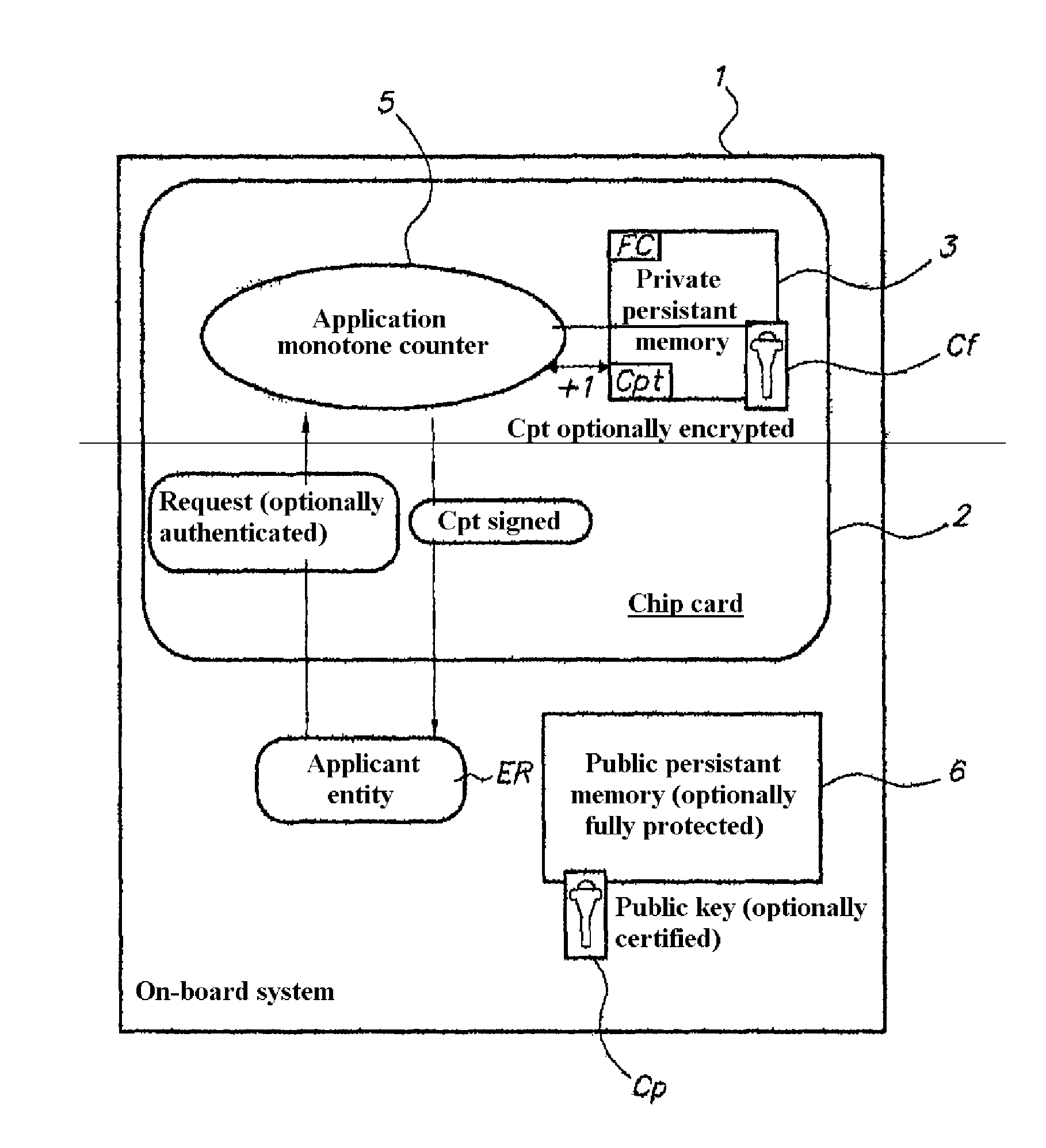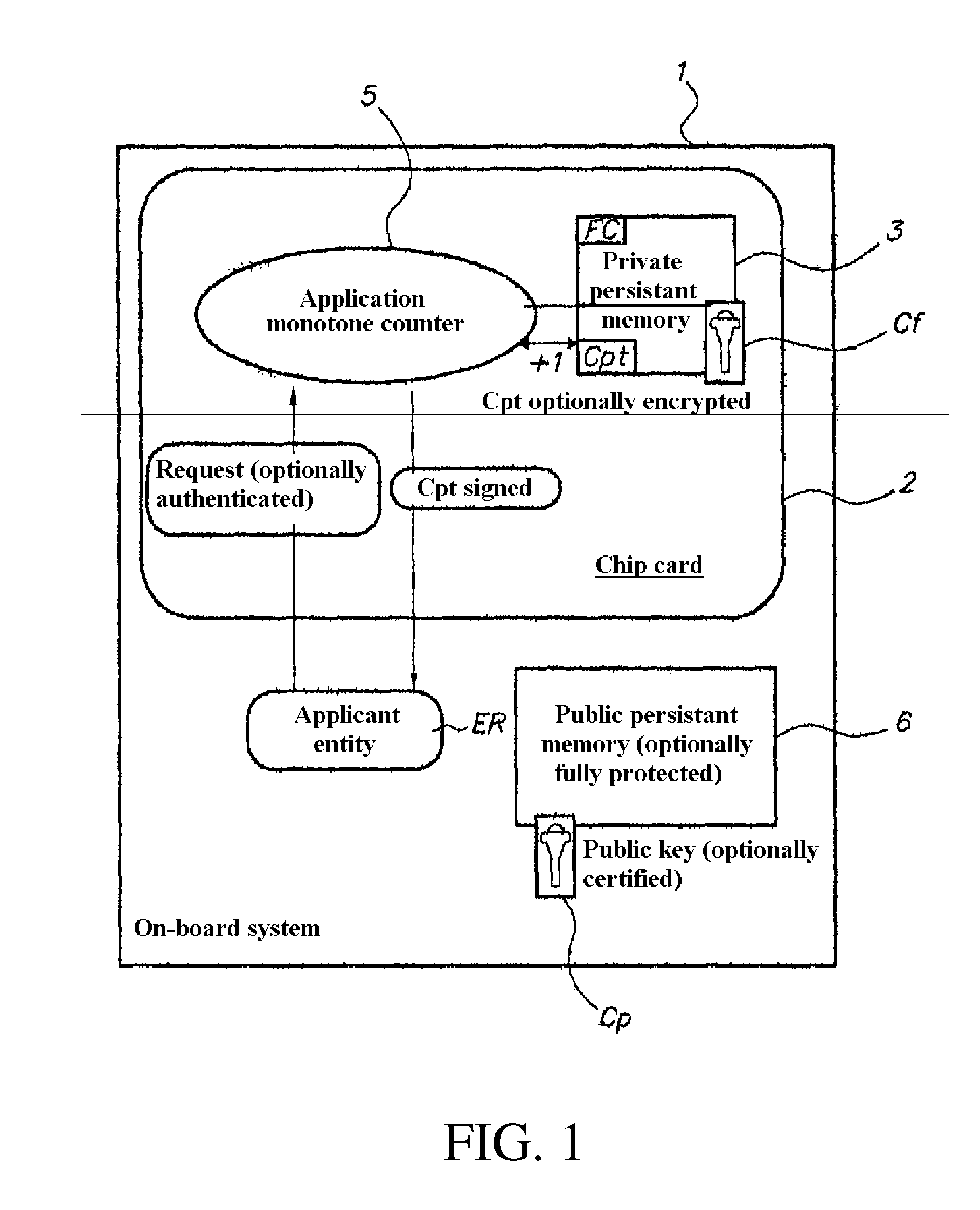Method for creating a secure counter on an on-board computer system comprising a chip card
- Summary
- Abstract
- Description
- Claims
- Application Information
AI Technical Summary
Benefits of technology
Problems solved by technology
Method used
Image
Examples
Embodiment Construction
[0035]In this example, the embedded system (block 1) has a chip card (block 2) comprising a private persistent memory (block 3) in which a counter Cpt is stored, a private key Cf stored in the re-writable part of the persistent memory zone (block 3), read-protected, and a counting function FC.
[0036]The counter Cpt and the private key Cf can be accessed solely by the counting function FC. Modification of the counter Cpt by the counting function FC consists of a+1 increment.
[0037]On the chip card (block 2) there is also a monotonic application (Application monotone counter, block 5). This application, which uses the private key Cf, can be automatically launched as the card 2 is powered up, or manually by the owner of the card 2. It replies to requests emitted by a caller, emitted outside the card.
[0038]The embedded system (on-board system, block 1) also comprises a public key Cp (or a public key certificate Ccp) stored in a public persistent memory (block 6) (ideally integrity-protect...
PUM
 Login to View More
Login to View More Abstract
Description
Claims
Application Information
 Login to View More
Login to View More - R&D
- Intellectual Property
- Life Sciences
- Materials
- Tech Scout
- Unparalleled Data Quality
- Higher Quality Content
- 60% Fewer Hallucinations
Browse by: Latest US Patents, China's latest patents, Technical Efficacy Thesaurus, Application Domain, Technology Topic, Popular Technical Reports.
© 2025 PatSnap. All rights reserved.Legal|Privacy policy|Modern Slavery Act Transparency Statement|Sitemap|About US| Contact US: help@patsnap.com


